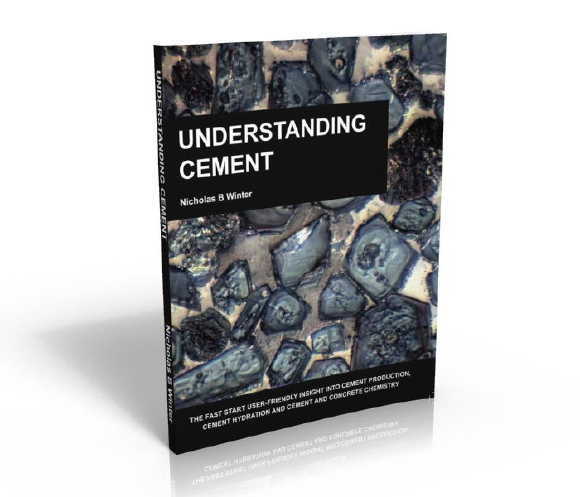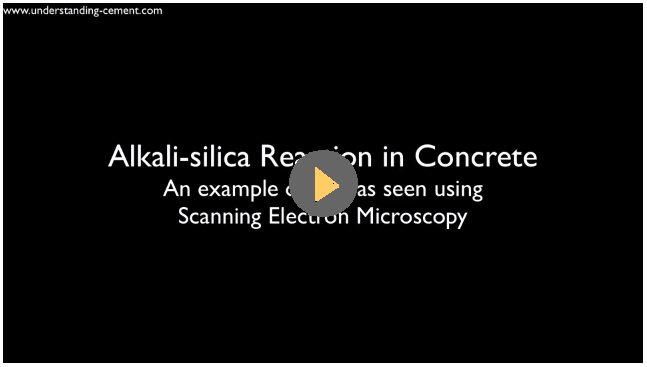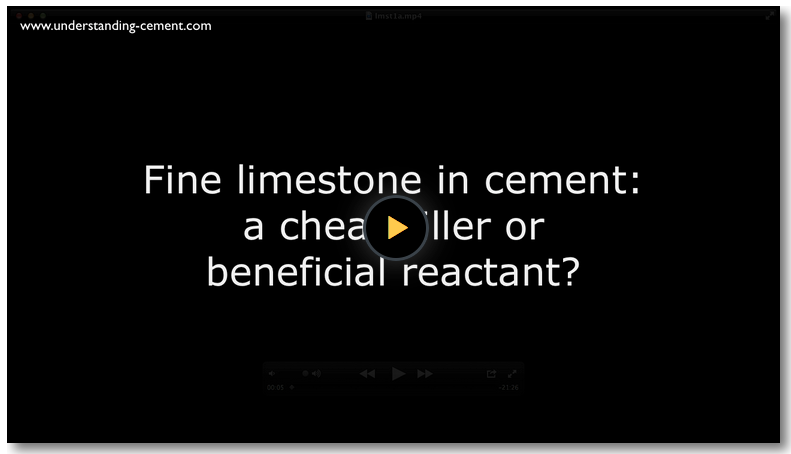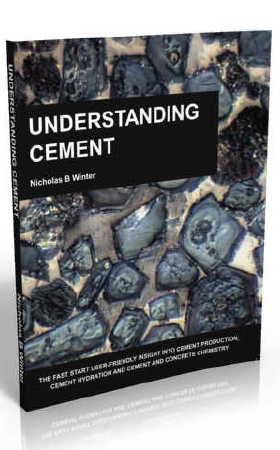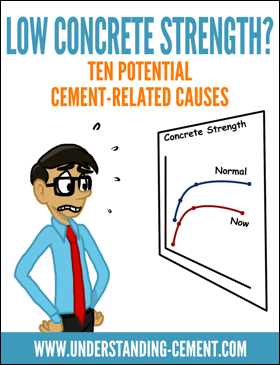Some basic definitions used in cement and concrete
A few useful basic definitions follow, since the meanings of the words 'cement' and 'concrete' are rather blurred in general use.
Portland Cement: Material made by heating a mixture of limestone and clay in a kiln at about 1450 C, then grinding to a fine powder with a small addition of gypsum. Portland Cement, the main subject of this site, is the most common type of cement - 'basic cement', if you like. In particular, ordinary Portland cement is the normal, grey, cement with which most people are familiar. Other types of Portland cement include White Portland Cement and Sulfate Resisting Portland Cement (SRPC).
Clinker: Portland cement is made by grinding clinker and a little added gypsum. Clinker is a nodular material before it is ground up. The nodules can be anything from 1mm to 25mm or more in diameter.
Cement: Usually taken to mean Portland Cement, but could mean any other type of cement, depending on the context.
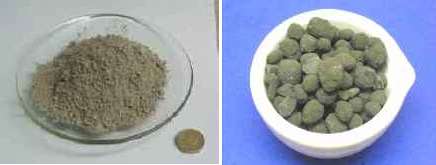 Difference between Cement (left) and clinker (right). The coin is about 23mm across.
Difference between Cement (left) and clinker (right). The coin is about 23mm across.Aggregate: Cobbles, pebbles, gravel, sand and silt - the 'rock' component of all particle sizes in concrete.
Concrete: Synthetic rock made using cement (usually, but not necessarily, Portland cement) mixed with aggregate and water.
Mortar: Mixture of cement and fine aggregate, mainly sand. Used typically to bond bricks and building stone.
Grout: Mixture of cement (possibly of various types) and other fine material such as fine sand. Used in a wide range of applications from filling the gaps between bathroom tiles to oil wells.
Composite cements: Some types of cement are mixtures of Portland cement with other material, such as blastfurnace slag from iron production and pulverised fuel ash from coal-fired electricity power stations. These widely-used mixtures are called 'composite' cements.
Non-Portland cements
Of course, there are other types of cement apart from Portland cement. Important examples include:
- Calcium aluminate cements
- Lime concrete/mortar
- Expansive cements
Calcium aluminate cements (CACs)
These may also be termed
'Ciment Fondu' and used to be called 'high alumina cements.' They are
made from lime or limestone mixed with bauxite (aluminium ore) or other
high-alumina material.
Concretes made with CACs develop strength
quickly and are resistant to chemical attack. CACs have a wide range of
compositions, mainly with different ratios of lime to alumina; strictly,
‘Ciment Fondu’ is only one part of this compositional range. CACs are
generally brown or grey-black, but can be white if made from pure
alumina.
As well as being used in concrete, CACs are also used in
grouts and other specialised applications, often mixed with Portland
cement and other materials such as gypsum.
Lime concrete and mortar - the most basic cementitious material
Lime
mortar and concrete have been used for thousands of years (see history
of cement) so, historically, lime is probably the most basic
cementitious material of all. Today, lime mortar and concrete are used
mainly in the rebuilding or repair of historic or ancient buildings,
although in the UK there has been some recent use of lime mortar in the
construction of new buildings. There are several advantages in using
lime mortar:
- Cracks that develop in lime mortar tend to heal themselves, unlike conventional mortar made with Portland Cement.
- Lime mortar is usually weaker than mortars made with Portland Cement and so can be removed from the brick or stone at the end of the useful life of the building. Particularly in the case of bricks, this means that they can be recycled, saving a lot of energy otherwise needed to make new bricks. Bricks used with mortar made with Portland Cement generally can’t be re-used as it is difficult to detach the mortar from the brick without damaging it.
- Lime is produced at a lower temperature than Portland Cement, so other things being equal, it takes less energy to produce a lime mortar compared with a mortar containing Portland Cement.
For more on lime mortar and concrete see, for example, the wikipedia entry.
Expansive cements
These are special cements designed to exert an expansive force on their surroundings after the cement has set. (With most cements, manufacturers go to a lot of trouble to make sure the cement is not expansive). Expansive cements are used mainly in demolition and mining.
Get a Better Understanding of Cement
Articles like this one can provide a lot of useful material. However, reading an article or two is not really the best way to get a clear picture of a complex material like cement. To get a more complete and integrated understanding of cement and concrete, do have a look at the Understanding Cement book or ebook.
This easy-to-read and concise book contains much more detail on concrete chemistry and deleterious processes in concrete compared with the website.
For example, it has about two-and-a-half times as much on ASR, one-and-a-half times as much on sulfate attack and nearly three times as much on carbonation. It has sections on alkali-carbonate reaction, frost (freeze-thaw) damage, steel corrosion, leaching and efflorescence on masonry. It also has about four-and-a-half times as much on cement hydration (comparisons based on word count).
Click here for more information
Check the Article Directory for more articles on this or related topics
